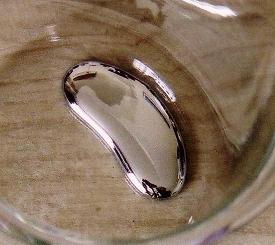Team:Korea U Seoul/Project
From 2010.igem.org
(→Introduction) |
|||
| Line 1: | Line 1: | ||
{{:Template:KUmenu}} | {{:Template:KUmenu}} | ||
| - | + | <div id="yong"> | |
='''Abstract'''= | ='''Abstract'''= | ||
Toxic heavy metals such as arsenic, zinc, and cadmium in water are very harmful. Detecting these heavy metals is an important task. So we designed a heavy-metal-detecting E. coli. In order to design the system, we employed two fluorescence proteins (GFP, RFP) and aryl acylamidase as signal reporters. The aryl acylamidase converts a colorless acetaminophen(Tylenol TM) to a brown color substrate. Since the detecting E. coli has three heavy metal promoters, if more than two heavy metals coexist in a solution, the E. coli emit mixed fluorescence, so we simultaneously detect metals. Our goal is to synthetic modules put these three genes for different heavy metals in a row in E. coli and then utilized in the form of a lyophilized powder, which can be stored in a drug capsule to make it portable so that analysis of water is easily processed. We call it a "Capsule Cop". | Toxic heavy metals such as arsenic, zinc, and cadmium in water are very harmful. Detecting these heavy metals is an important task. So we designed a heavy-metal-detecting E. coli. In order to design the system, we employed two fluorescence proteins (GFP, RFP) and aryl acylamidase as signal reporters. The aryl acylamidase converts a colorless acetaminophen(Tylenol TM) to a brown color substrate. Since the detecting E. coli has three heavy metal promoters, if more than two heavy metals coexist in a solution, the E. coli emit mixed fluorescence, so we simultaneously detect metals. Our goal is to synthetic modules put these three genes for different heavy metals in a row in E. coli and then utilized in the form of a lyophilized powder, which can be stored in a drug capsule to make it portable so that analysis of water is easily processed. We call it a "Capsule Cop". | ||
| Line 69: | Line 69: | ||
H.W.Doelle. ''Microbial process development''. World scientific. 1994. pp.64-65. | H.W.Doelle. ''Microbial process development''. World scientific. 1994. pp.64-65. | ||
| + | </div> | ||
Revision as of 13:08, 27 October 2010

Contents |
Abstract
Toxic heavy metals such as arsenic, zinc, and cadmium in water are very harmful. Detecting these heavy metals is an important task. So we designed a heavy-metal-detecting E. coli. In order to design the system, we employed two fluorescence proteins (GFP, RFP) and aryl acylamidase as signal reporters. The aryl acylamidase converts a colorless acetaminophen(Tylenol TM) to a brown color substrate. Since the detecting E. coli has three heavy metal promoters, if more than two heavy metals coexist in a solution, the E. coli emit mixed fluorescence, so we simultaneously detect metals. Our goal is to synthetic modules put these three genes for different heavy metals in a row in E. coli and then utilized in the form of a lyophilized powder, which can be stored in a drug capsule to make it portable so that analysis of water is easily processed. We call it a "Capsule Cop".
Introduction
| Pollutant |
| A pollutant is a waste material that pollutes air, water or soil, and is the cause of pollution.There are many pollutant all around us. Pollutant may enter ecosystem as the consequence of human activities in the follwing ways. First, unintended relese in course of human activities(e.g., in nuclear accidents, mining operations, shipwrecks, and fires). Second, diposal of waste(e.g., seweage, industrial effluents). And last, Deliberate application of biocides(e.g., pest control and vector control) |
| Metal |
| There are many types of pollutatns. Especially, Metal pollutant attracted our attention. A metal is defined by chemists as being an element that has a characteristic lustrous appearance, is good conductor of electrocity, and generally enters chemical reactions as positive ions or cations. There are a few examples of localized metal pollution resulting from natural wethering of ore bodies. However, in most cases, metals become pollutants where human activities, mainly through mining and smelting, releases them from the rocks in which they were deposited during volcanic activity or subsequent erosion and relocates them into situations where they can cause environmental demage. |
| That is clear that human activity is responsible for the global movement of Cadmium, Lead, Zinc, Mercury, Arsenic. And these metals can be pollutant when its concentration exceeds a threshold value in a particular envionmental compartment. The compartment is the whole planet, but compartments can be individual organism or thing as small as single cells or even organelles within cell. Especially, Cadmium,
Zinc, Arsenic can be harmful when these metals exist high concentration. | ||||
| Cadmium |
DesignTo sense heavy metals, we select promoters which are expressed in the presence of heavy metals. These promoters encode proteins maintaing cell conditions resistant to heavy metals. ParsR is promoter to arsenic and PzntA is for zinc. Low concentrations can have devastating effects, interfering with processes in the cell. Because of the similarity to phosphate, sometimes arsenate is mistaken for phosphate, which is how it is introduced into living organisms, including E. coli, by the phosphate uptake system. Other molecules such as As(III) can also be introduced into the cells by various membrane transporters. Cells have effective defenses to deal with elevated levels of arsenic variants, which are under the control of metal sensitive promoters. The transcription is mostly regulated by proteins binding to, or releasing from the promoter site, like ArsR. ArsR negatively controls the expression of the genes involved in arsenical and antimonite metals resistance, whose expression is induced in the presence of these metals. In case of cadmium, there is no promoters encoding resistant to cadium directly. So we select Promoter yodA. At low cadmium concentrations, cells are able to adapt and resume growth after a period of stasis. Promoter yodA is only transiently activated during cadmium-induced growth inhibition. Aryl acylamidase is an enzyme that acts on the amide bond between aryl- and acyl groups. The most typical reaction is the hydrolysis of an anilide, producing a carboxylate and aniline, which is also reversible. Acetaminophen(Tyrenol) is an aryl acyl compound having amide bond is hydrolyzed by the enzyme and produce acetate and p-aminophenol. Because p-Aminophenol have red-purple color, aryl acylamidase gene will apply to reporter gene. Since aryl acylamidase gene(mAAA, BBa_K400628) is not registered to iGEM, we registered this gene. MeasurementResultDiscussionFreeze dry
ReferencePuskárová A, Ferianc P, Kormanec J, Homerová D, Farewell A, Nyström T. Regulation of yodA encoding a novel cadmium-induced protein in Escherichia coli. Microbiology. 2002 Dec;148(Pt 12):3801-11. H.W.Doelle. Microbial process development. World scientific. 1994. pp.64-65. |
 "
"

